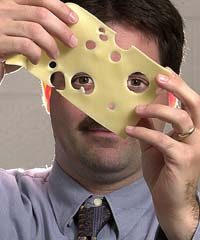This special field revolves around processes for modifying material properties (milling, cooling), composition (filtration, distillation) and type (oxidation, hydration).
Valuable information is available on a broad range of technologies including material separation, laser processes, measuring techniques and robot engineering in addition to testing methods and coating and materials analysis processes.

Aircraft wheel and brake assemblies can become very hot during braking as the plane’s kinetic energy is transformed into heat by brake pads and dissipated into the surrounding components. The wheel, the tyres, the piston that clamps the pads into place and the metal housing of the brakes are all subject to sudden and intense heat. Now a new aluminium alloy eases manufacturers’’ fears of failure by handling the heat better.
The new alloy therefore forms a key component of a car

Explores abandoned mine
Carnegie Mellon University researchers, working with the Pennsylvania Department of Environmental Protection (DEP) and the U.S. Department of Labor’s Mine Safety and Health Administration (MSHA), will demonstrate a prototype, autonomous wheeled robot today as it explores and maps a 3,500-foot corridor of an abandoned coal mine near New Eagle in southwestern Pennsylvania.
Named Groundhog, the robot was developed by students in the Robotics Institut

A new method to accurately measure quantities of a cheese-ripening enzyme in milk could reduce the time and cost of producing cheese, according to a report by Purdue University researchers.
Infrared spectroscopy was used in combination with statistical analysis to determine the concentration of plasminogen, a form of the enzyme integral to cheese manufacturing. The study, by co-authors Lisa Mauer and Kirby Hayes, both assistant professors in the Department of Food Science, is published in th

Within the remit of the CRAFT European projects, the Departments of Materials and Mecatronics at CIDEMCO, in conjunction with IKERLAN (E) y VTT (FI), have finalised a development project for an on-line system for the measurement and control of the thickness of varnishes. The aim was to develop equipment which would provide information about the quantity of the product applied in the various varnishing processes.
As a rule, the quantity of varnish applied is controlled only at the start of a

Not only can an electronic tongue monitor the prevalence and growth of microorganisms, it can also sense the difference between various forms of fungi and bacteria. This is shown in a dissertation by Charlotte Söderström submitted at Linköping University. An objective of the project as a whole is to be able to make use of an electronic tongue in the future to monitor whether foodstuffs are fit for human consumption.
Today’s monitoring methods involve taking samples from production and analyz

The feasibility of using microwaves to extract minerals from rocks has been demonstrated by UK researchers.
This revolutionary technique could cut mining and mineral processing industry costs, and make it viable to process previously uneconomic mineral reserves. It could also help the environment by saving energy as 3 – 5% of the world’s entire electrical energy output is used for the size reduction of rocks and minerals.
The technique has been developed by engineers at the